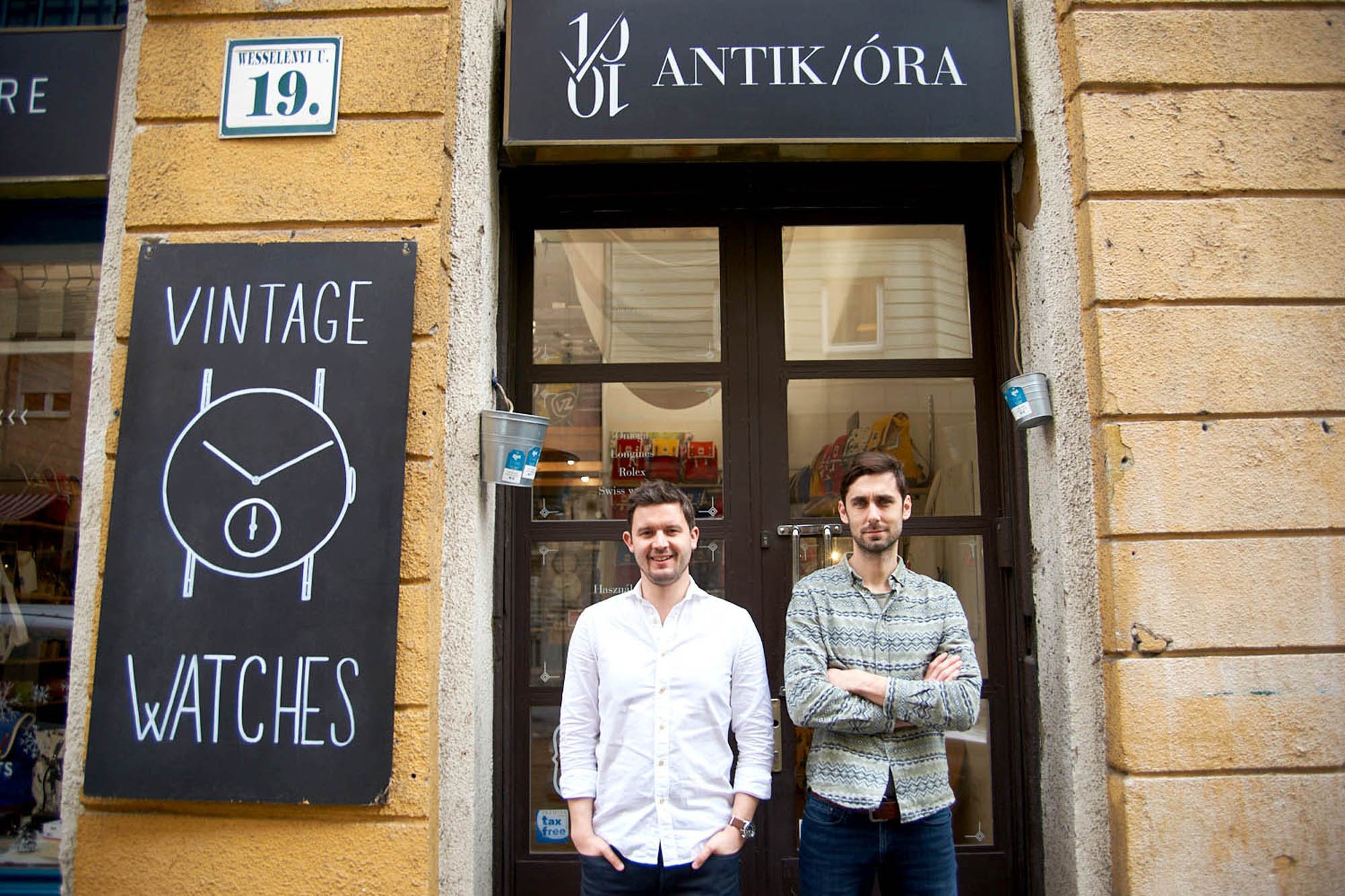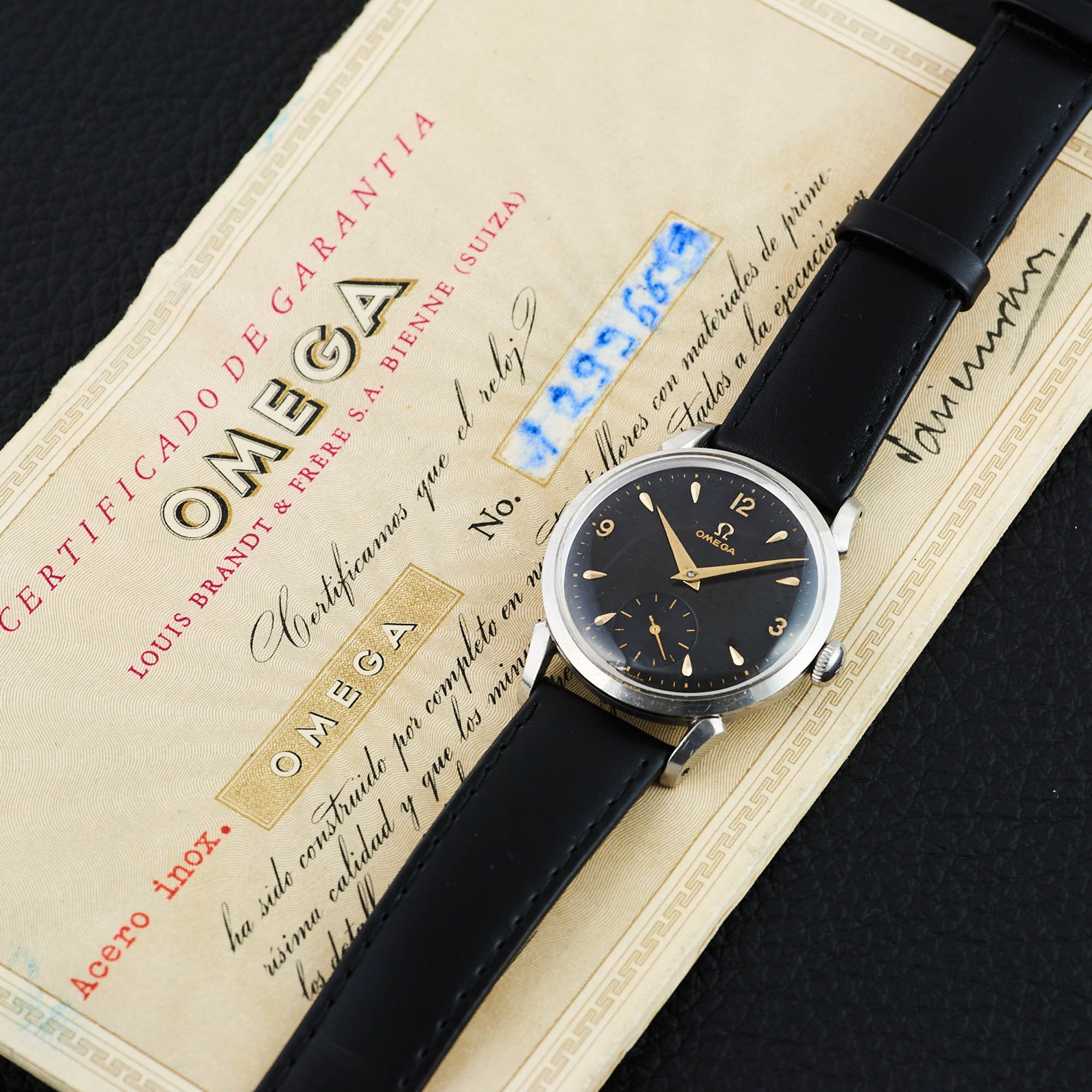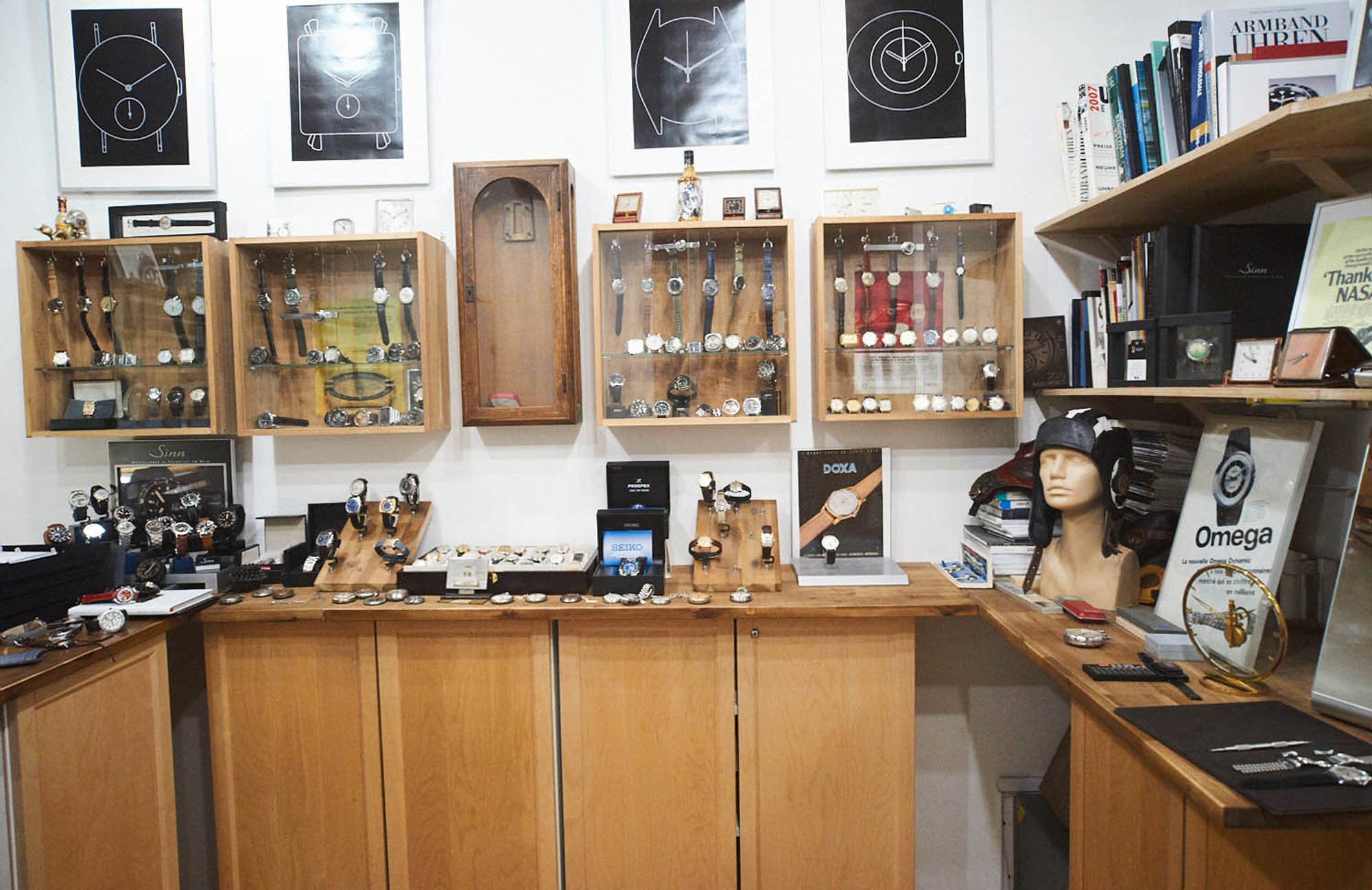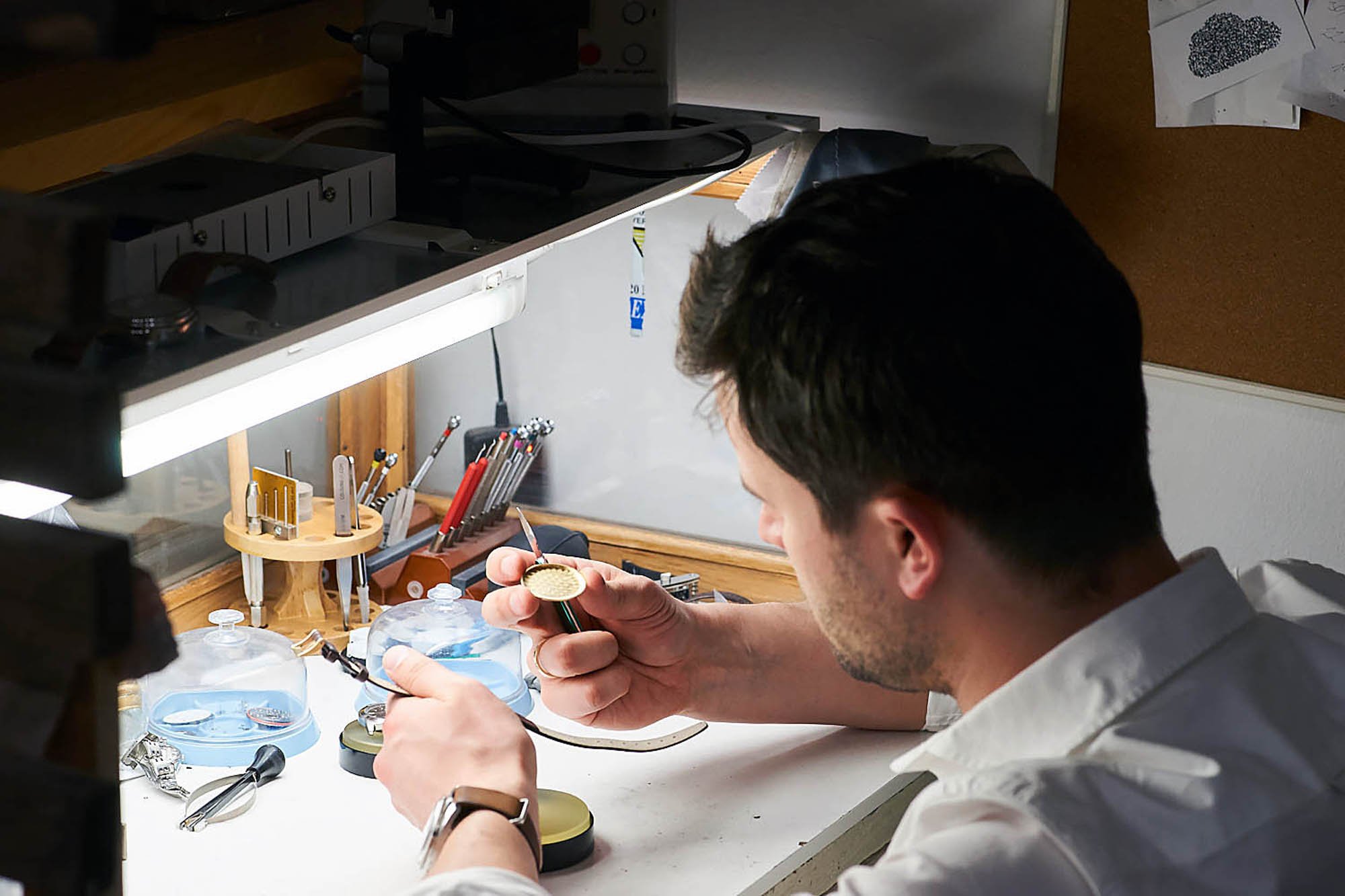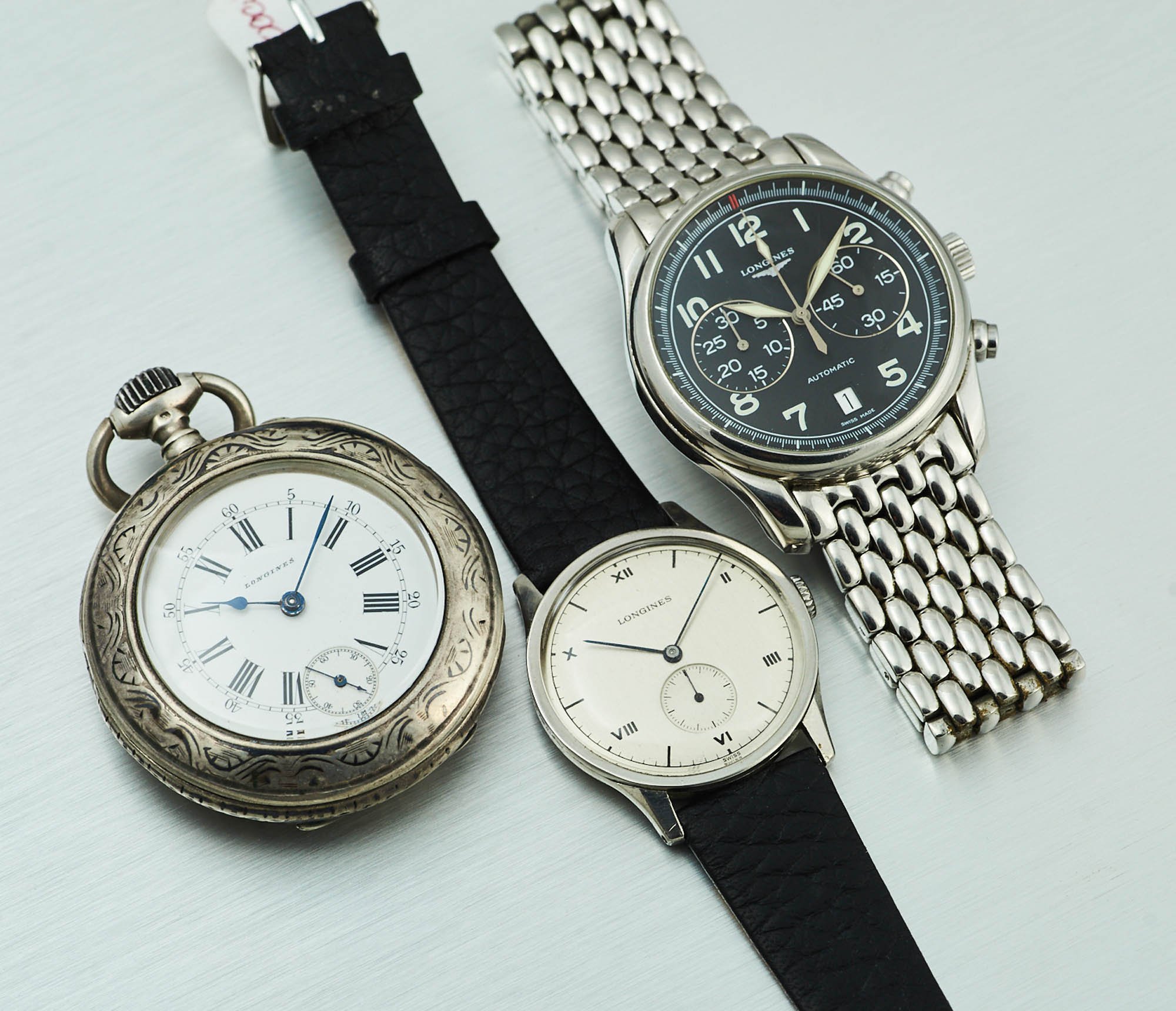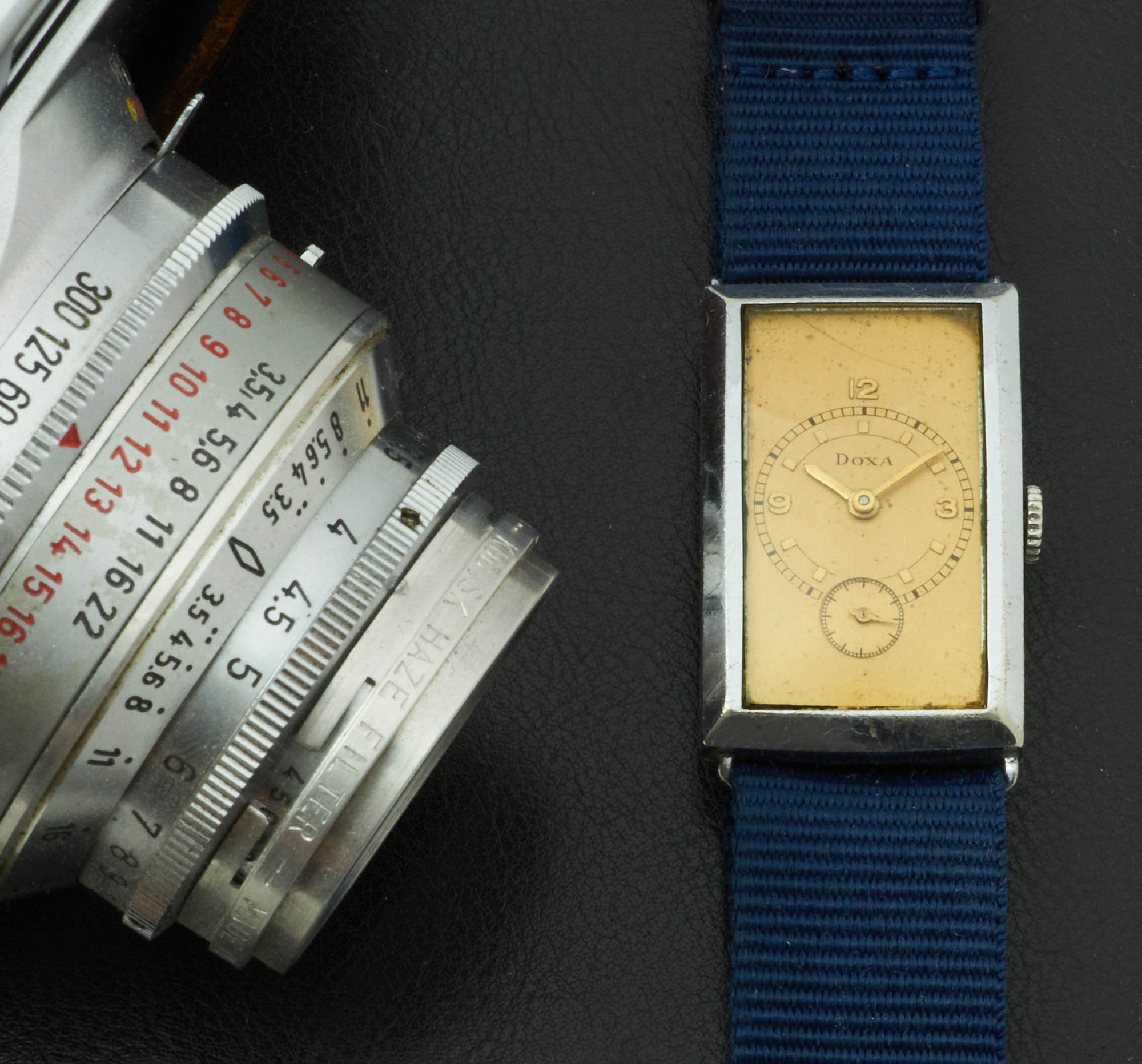Interview with Zsolt Csörgő Of 10ora10, Budapest
Zsolt Csörgő says that vintage watches are almost the only practical vintage objects. I will repeat that to myself in the morning, when my 1979 daily beater Honda decides, once again, not to start up.
I travel to Budapest for business a few times a year. Well, I used to until a few months ago, you know… When I had some spare time, I always rushed through the city center streets to visit the charming little vintage watch store 10ora10. While I lurk around the nicely styled displays decorated with framed vintage print ads, the owner of the shop Zsolt Csörgő always pulls out something interesting. Anytime I sport my art deco Tissot with a beautiful patina and sword hands, the eye-popping Bulova, or my obscure fortress Yema Navygraf II, memories from his shop come to life.
I’ve planned an interview with Zsolt for months. The unexpected turn of events made our meeting at his shop impossible. On a brighter side, the interview might be even more interesting for you now. I am really happy that Zsolt is such a brutally honest and open person. Not only in regards to his opinions about the vintage market in general but also about his business. If you’d like to hear Zsolt’s tips on hidden gems and real value, keep on reading…
Tomas Rospitinsky: How many watches do you keep in the store?
Zsolt Csörgő: Approximately 400 pieces.
TR: How many watches monthly do you need to sell to keep the business profitable?
ZC: I will answer in a slightly different way. Over the course of the entire year, we sell a bit under 1,000 pieces. So, it’s on average about 80-90 watches a month.
TR: What was the ratio of watches sold online in comparison to store sales, before corona hit?
ZC: Our shop is a magical place and plays an important role. Despite the fact that 70% of all purchases are triggered via social media posts, only 5% are actually sold online. Customers love to come to visit us and pay in-store. We like that too, as it is important for relationship building. Being fully online was never a priority, but the current situation forced us to focus more on web-sales too.
TR: How easy it is to switch from brick-mortar sales to online-only?
ZC: An e-shop without a strategy and marketing is worth nothing. At my former jobs, I worked on online development projects, so it was more obvious for me, what to do. But even for us, it takes a lot of effort to be online-ready. The good thing is it pushed us to finish an e-shop for international customers. And to do it quickly.
TR: If things go wrong and your revenues are struggling, how long can you survive?
ZC: The streets have been empty since the beginning of March, people are taking it seriously. We have to negotiate our rent because we are in the middle of the tourist zone. Being online-only might be devastating, but I think we will be okay this year. We are lucky because our revenue is not only from services but sales too so we could shift from offline to online in theory.
TR: Speaking of numbers, what kind of decline in sales have you experienced?
ZC: Compared to 2019, March was almost the same. Ask me again at the end of May. We post four new watches online a day on average, we sell as we did before. The only difference is that we lowered our inventory in terms that we are not buying as much. We see what will come in the next weeks and months. Meanwhile, we finally started to work on project watches that piled up over the years. We see it as another positive aspect.
TR: How old are you, Zsolt?
ZC: I am 33 years old.
TR: How come a young man in Budapest opens a vintage watch store?
ZC: When I was 17, I was told to find my 18th birthday present, a watch. I started to go to watch shops and browsed the available online markets. My first one turned out to be a quartz Bulova because as a greenhorn I listened to a watchmaker who said that a Seiko5 will stop if I don’t wear it a lot. Later, I bought two other Soviet watches from the flea market.
From that time I was constantly browsing the internet for watches. I made my first deals when I was 20 years old. Counting now, this is my 13th business year actually. I would not call myself a collector, as you can‘t be a collector and a dealer at the same time. It allows me to stay focused on the business.
Selling my first watch through a bidding site in Hungary was easy. The second one was easy too. But the more watches I had, the more I needed to service them. So I started to work on them myself, small jobs first. After I graduated with a degree in economics, I found a job. But I realized I earned as much from dealing as I got paid at work. I couldn’t focus on my job as much as I wanted, so I had to quit. Online sales and creative personal pickups were not good enough though, so the idea of opening a shop came about spontaneously. When my best friend joined me, we needed a place to work from. So in 2015, we opened our first tiny store.
TR: Where do you get watches from?
ZC: Nowadays mostly from antique buyers, big watch fairs, and flea markets. Getting watches online is harder. It takes a lot of time and effort to build up such a big selection.
TR: What is the hottest vintage stuff these days?
ZC: I guess you know the answer. Rolex and Moonwatch. But you might be surprised, what sells fastest. At 10ora10 it is a watch in a 35-36mm steel case, with a silver dial and costs around from 300 to 500 Euros.
TR: So, is it better to sell low budget watches?
ZC: Iconic and low budget watches are two different markets. Selling iconic watches is always the aim, as it is good for business. Internationally, we are a low budget dealer, as we do not have red Submariners and WWW Jaegers. But you know as well as I do that it is not only about budgets, but people’s knowledge about watchmaking.
There are iconic pieces for €100. Watch lovers have to be introduced to this world in a deeper way. In our selection, we mix the two lines. I give an example of having a Zenith manual, round case, no-nonsense watch, and also funky, square, chunky, crazy sh*t as well. The revenue mostly comes from the standard ones, however.
TR: Do you have more seasoned collectors coming to the store or newcomers?
ZC: November and December is the time for newcomers, buying presents. Collectors come anytime they have money. June is always strong for young buyers, although I cannot explain why.
TR: What is the most undervalued watch in your eyes?
ZC: IWC is one sad story. Everyone knows the brand, but the prices are so low and it hasn‘t moved in the last decade. Even prices for entry Omega watches reach the Schaffhausen brand, although rarity and finishing are not even close. You can get a manual IWC caliber 89 for some 500-600 Euros? With a yearly production volume of 60,000 against millions of Omega watches, it’s a shame. When you go deeper, Universal Geneve and Movado are also unknown to wider audiences.
TR: Tell me, Zsolt, what are your personal favorite vintage watches?
ZC: For wearing it is my ‘40s oversized Omega. Since I don’t have to wear shirts all the time, anything with NATO straps, such as the linen dial Rolex Datejust with a suede vintage leather Nato. I wear a lot of Seiko watches as well. The blue Pogue is always on my table to pick up. For collecting, I would choose a Certina DS2 PH1000, an Omega PloProf, an Omega Big Blue, a Seiko 6159 Hi-Beat Diver, or the Jaeger Polaris II.
TR: Was there a watch someone brought in and you never offered it for sale and just bought for yourself?
ZC: Just a few pieces, as I really try not to collect. Deep in my safe, there is a 38mm unworn Stowa Antea, an unworn dead beat second Tourist with a Chézard movement (note: we featured one here), an automatic no-date Omega Dynamic on an original leather strap with an original buckle or a Sinn 140 from 1986. But honestly, even if I wanted to keep them all, after a few months we sell everything. It is really key to the business.
TR: What does your typical customer look like, Zsolt?
ZC: A casual business guy from Budapest.
TR: And aged…?
ZC: 10% below 30, 60% maybe 30-40 years, 20% up to 50, and 10% over 50 years old. I’m happy to say our clientele is not 100% male. About 20% of our customers are women.
TR: Are Hungarian customers any different to international folk?
ZC: I don’t think so, except everyone has, has had, or will have a Doxa. It’s one of the only Swiss brands that was officially sold during communism and it was a bit of a status symbol. Anyway, the price level here is lower, the watch culture is not so nurtured, not even in the middle class. Naturally, if Hungarian salaries are 50% that of western workers, their watch budget is lower.
TR: Do you have returning customers?
ZC: Yes, we do! This is an addiction. You start with something small, and you keep on searching for new things. Customers that bought a watch come back and trade it for more expensive watches. It is no wonder we often trade back old pieces that came from us. So we happily resell them again.
TR: How many watches do your customers buy a year?
ZC: Simply put, 80% of customers buy one watch, 20% buy like 5 watches a year.
TR: Are established online sellers a good or bad thing for your business?
ZC: Both, I suppose. Many customers take online prices as a fact and they often ask for crazy prices when they bring their watches to the store to sell or trade them in. That’s the negative side of things. On the positive, these sites build awareness and feed a passionate community.
TR: How does the retail reality compare to those online prices?
ZC: A tricky question. The same watch can be sold for €200 here but for €2,000 in Amsterdam. Or vice versa. The same applies with flea markets, where you buy with risk. It is possible to get good deals in real life, possibly as much as 30% below what you might find online. But it is not easy. You often have to travel a lot or know the right people.
TR: What was your first vintage watch and how much did you pay for it?
ZC: A steel Poljot and I paid 15 Euros for it.
TR: As a dealer. Did you sell it or still keep it?
ZC: I still have it somewhere at home.
TR: What is your ultimate goal?
ZC: To have a full-service workshop, sooner or later. And not to forget, to find a beautiful, not insanely overpriced watch from 1986. I know it might sound weird judging my position, but I’ll tell you, so far I haven’t found one.
You can find more info about Zsolt’s and his watches on 10ora10.hu.

